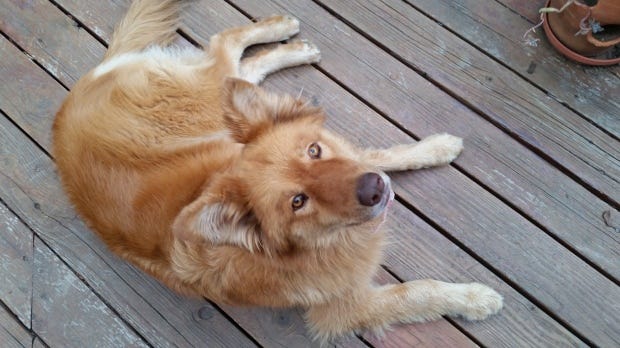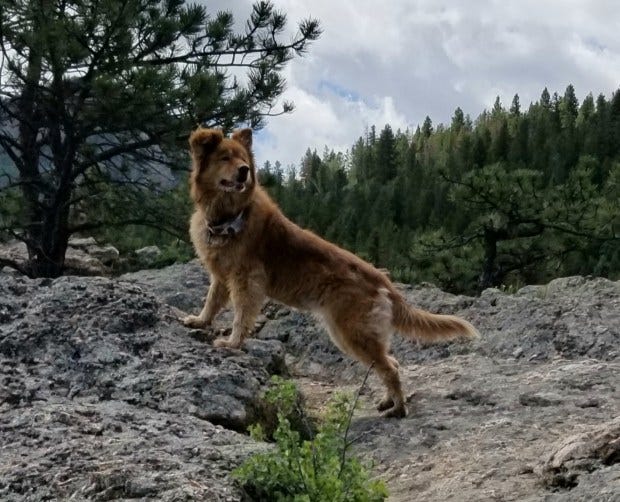When It's Time to Say Goodbye
It’s never easy, but there are signs and symptoms that it may be time
Nearly every day my dog walked beside me. We walked throughout the city, on mountain trails, and along lakes and streams where, freed from the leash, she would eagerly jump in. Sometimes I was on horseback, snowshoes, or my bike, she keeping up in merry stride. I tested her patience by foraging for wild fruit when she wished to press on. I waited while she immersed herself in some enticing scent or took a luxuriant roll in the grass.
For almost 13 years, my dog was my partner in adventure, my comfort in loneliness, and my loyal friend. Taking that final walk at the vet with her this week was a devastation that has left me inconsolable. Yet it was an act of devotion.
Every first-time dog owner, indeed every owner of a beloved pet, wonders what they will do in such an eventuality. As much as we would like pets to die peacefully in sleep and relieve us of this grave responsibility, it is rarely that easy. Human beings can see beyond pain and suffering, as a hospice volunteer I can attest, but animals cannot; they are overcome and must be relieved of a burden they cannot bear.
I miss her so much.
It seems but a short time ago, I brought home from the dog pound a tawny, six-week-old pup. I named her Bacon because I always found food names for pets funny. Her blue eyes turned the color of honey and the shepherd markings faded as the thick golden chow coat came in. One of her pointed ears tipped over and remained ever at half-mast. Since people assume big dogs, especially those with a name like Bacon, are male, I sewed pink bandanas for her to wear. She was a beautiful dog. Even as her muzzle grayed and she grew thin, strangers still stopped to tell me so.
Bacon had the keen intelligence and playfulness of a German shepherd and from the chow stock independence akin to a cat’s. She knew more than a dozen commands by voice and hand signal but sometimes treated them as suggestions. She loved to roughhouse but only with me. Though a guardian to my chickens and a companion to cats, horses, and dog friends, she liked to brawl with dogs she didn’t know. We didn’t go to the dog park. Instead, we walked.
This year the walks started getting slower and shorter. In late January she and I took our last hike. I believe her strong will and exuberance concealed the pain she was in. She never cried or whimpered. A few months ago I noted it was getting harder for her to get up and she sometimes arched her back, a sign of pain. There was a time when I would ask “who wants a belly rub?” and immediately she would assume the belly rub position, but she no longer wanted them. In the last week of her life she didn’t want to be petted anywhere but her head.
Loss of mobility, arched back, shaking, holding the head below the shoulders, and excessive panting are signs of pain. In the last 24 hours of her life, Bacon experienced all of these symptoms. In the last 12 hours of her life, she wouldn’t eat or drink and for the first time in her life showed no enthusiasm for the leash, her cats, or her treats. I know from the loss of my cat Boo Boo some years ago that cats also exhibit a loss of interest in toys, food, and water when they are dying. I have read that ailing cats can become unkempt and lethargic, experience abnormal breathing, or lose mobility. Sometimes ailing animals hide. These are signs we must watch for.
The decline in Bacon’s health had been slow but she still enjoyed napping in the shade, chicken jerky, and a daily walk up until her last full day. The next morning she stared at me in abject misery, barely able to walk. Her rapid and nearly total decline made the decision clearer but no less awful. I did not prolong her suffering to put off for another day that anguished goodbye.
I have not gone walking since she died though I will again. Like my beloved dog, venturing is in my soul. I cling to this – in heaven she waits to walk beside me once again.




